Indiana Dunes Finally Gets Its Due, but Conservationists Are Clamoring for More
After a century of advocacy, the Hoosier State has a national park, and its immense popularity is making a case for more protected lakeshore.
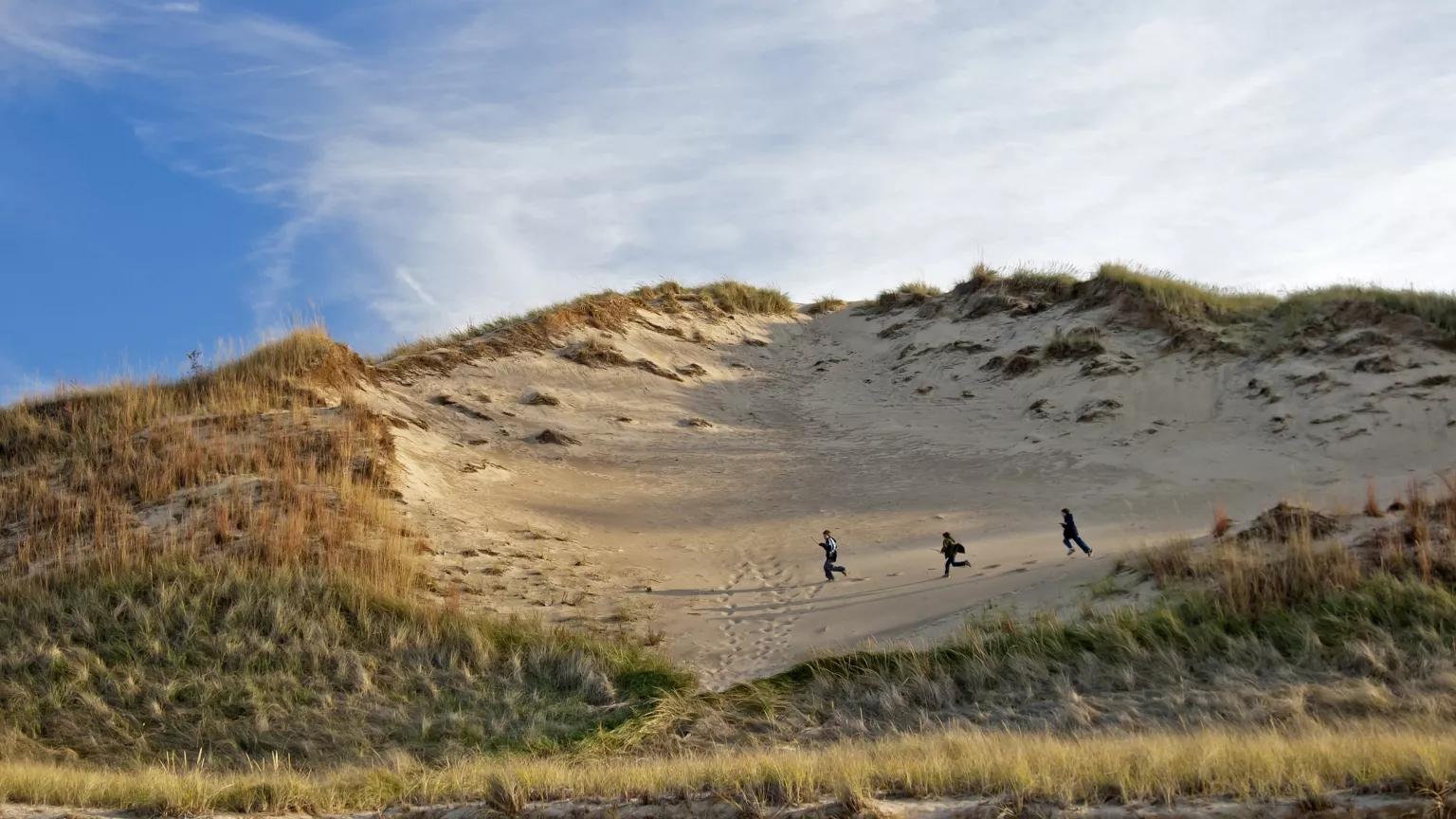
Playing in a dune in America’s newest national park
Tom Gill via Flickr
Alice Mabel Gray, a University of Chicago graduate who spoke several languages and was, by some accounts, a mathematics whiz, lived as a recluse among the dunes that stretch 15 miles along the southeastern tip of Lake Michigan. She had tired of Chicago’s “working conditions and lighting in offices,” and so in 1915, in her mid-thirties, she created a new existence in the sand. She slept in an abandoned fisherman’s shack that sat atop Mount Tom, a 192-foot-high dune overlooking the lake, and called her new home “Driftwood.”
Gray chronicled her life in the wilderness. When a Chicago newspaper started publishing excerpts of her writings, she was able to give people just 45 miles away a glimpse of her life in the largely uninhabited landscape, earning her the nickname “Diana of the Dunes.”
In 1916 Gray was one of many (including famed botanist Henry Chandler Cowles) who testified at a hearing set up in Chicago by the National Park Service’s first director, Stephen Mather, in support of Indiana Dunes becoming a national park. But World War I hampered their efforts.
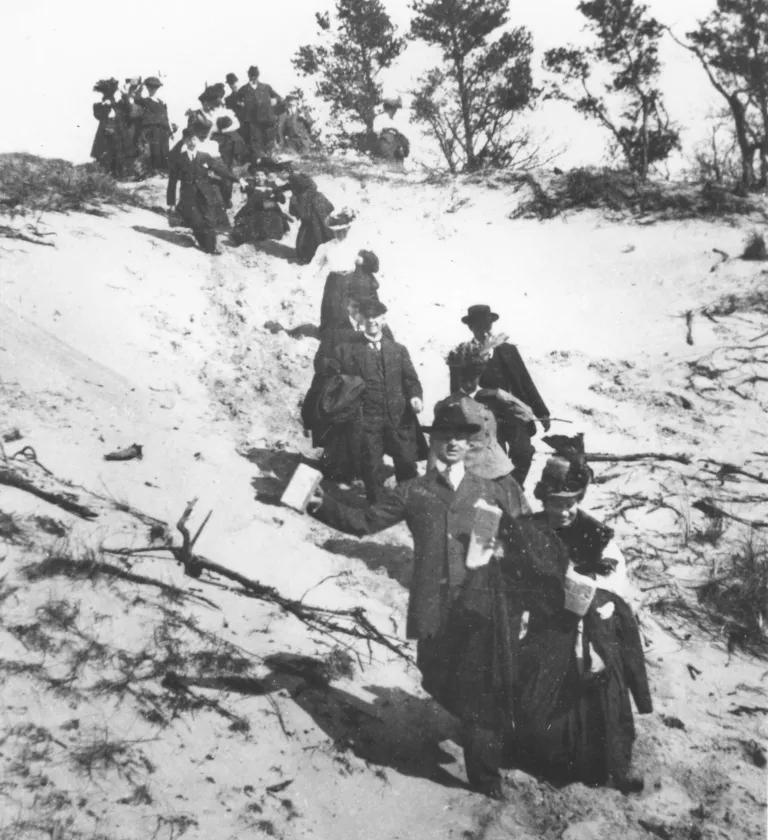
Stephen Mather, in front, the first director of the National Park Service, touring the dunes in 1916
Living in the wilderness for nine years, Gray witnessed increasing environmental destruction as companies took the sand, railcar after railcar of it, from Hoosier Slide, the tallest of the three dunes that dot the lakeshore. Still, she and other locals didn’t give up their campaign for protection. They finally persuaded the state of Indiana to conserve 2,180 acres of lakefront as a park in 1925, the same year Gray died of kidney failure at the age of 43.
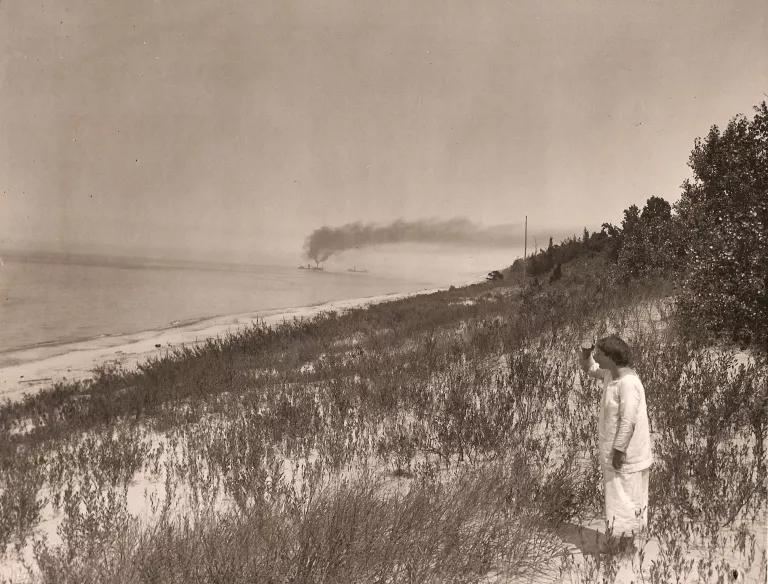
Alice Mabel Gray around 1916
Mission Accomplished
As the 20th century carried on, Gray’s beloved home persisted even as industry continued to encroach. In 1966 President Lyndon Johnson signed legislation that authorized funds to build the Port of Indiana–Burns Harbor just north of the park, so lake freighters could deliver limestone, iron ore, and coal to steel manufacturers in the area. The bill also authorized Indiana Dunes as a national lakeshore, a designation allowing wilderness and industry to coexist, albeit not perfectly.
In 1962, Indiana’s third-largest utility, NIPSCO (Northern Indiana Public Service Co.), built a coal-burning power plant in Burns Harbor, which operated until May 2018. Fewer than 15 miles to the northeast in 1972, a massive cooling tower for another NIPSCO power plant rose from the Michigan City shoreline in view of the dunes.
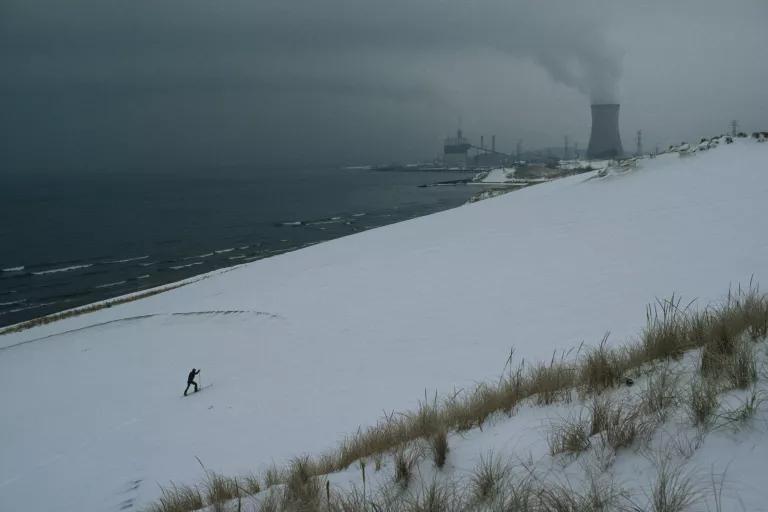
The park is popular year-round, attracting skiers during the winter months.
David Alan Harvey/National Geographic Image Collection
At various points, advocates fought off more development—for instance, by opposing a proposed nuclear plant in the 1970s that would have drained the wetlands surrounding the dunes. Finally in early 2019, 94 years after Gray’s death, the dunes became the country’s 61st national park. “This was the ultimate goal. We have achieved it,” says Natalie Johnson, executive director of the nonprofit Save the Dunes, who adds that the designation was an upgrade that brought more prestige.
Our newest national park is also one of the most biodiverse. More than 350 bird species, such as summer tanagers, prairie warblers, and veeries, flit and fly among the 1,100 native plants that grow on land once encased in glaciers. After the ice sheets retreated and lake levels lowered, the dunes took shape. Now oak trees grow out of their slopes, their trunks submerged in windblown sand.
What Now?
The value of Indiana Dunes, however, is more than just what it contains. The national park shows the benefit of preserving natural areas that people can enjoy in the midst of industrial development. From the park, visitors who hike the 50 miles of trails can catch glimpses of the steel mills and electric plants to the south. “This is an area that increasingly illustrates our country in general,” says Bruce Rowe, the park’s public information officer. “Urban and natural areas are coming together and the natural areas are becoming scarcer and scarcer . . . Every acre needs to be preserved.”
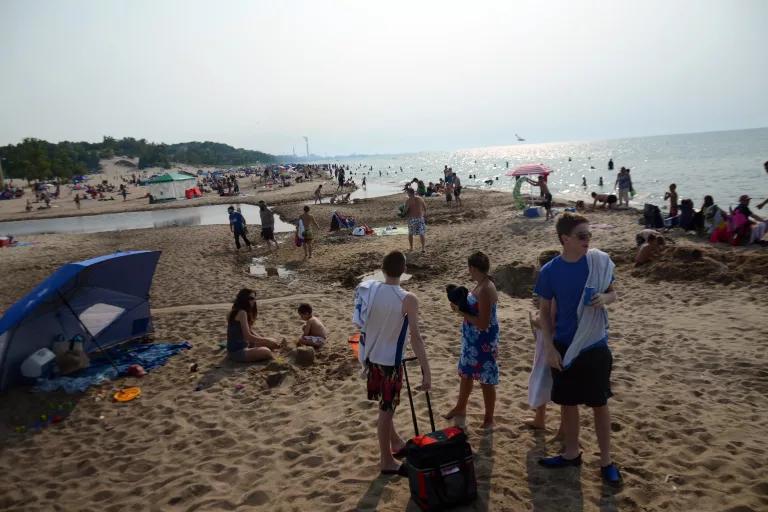
Summer at Indiana Dunes
Michael Kappel via Flickr
NIPSCO says it will shut down its remaining coal-fired generating plants, including the Michigan City plant that currently bisects the national park, by 2028, and replace them with renewable energy–generating facilities elsewhere. What will happen to the sites of the decommissioned coal plants remains up in the air.
One option is to restore the land and make the park one contiguous stretch. “We’re celebrating this as a possible opportunity to remediate and reclaim that land as protected land and add to the national park,” says Johnson. “We see it as a future destination.” Tourism in the area already generates $476 million each year, and the dunes’ recent promotion from national lakeshore to national park brought wave after wave of visitors. Compared with last year, Indiana Dunes has so far seen a 17 percent jump in the number of guests.
Michigan City’s mayor, Ron Meer, has said he’d like to give the public access to the area. (As of right now, the dunes just beyond the plant are closed off.) The move would open up another mile of lakefront, he told the Times of Northwest Indiana in January. Meer’s office has already met with NIPSCO about the demolition, remediation, and cleanup process.
But other industries could be interested in the site, too, especially since any new facility would be allowed to withdraw as much water from Lake Michigan as the plant now does. This idea isn’t popular with conservationists, who have seen other local industries pollute the water and air.
Just six months after Indiana Dunes became a national park, steel company ArcelorMittal spilled cyanide and ammonia into Lake Michigan. Hundreds of dead fish floated belly-up in the water, and park officials closed the beaches for days.
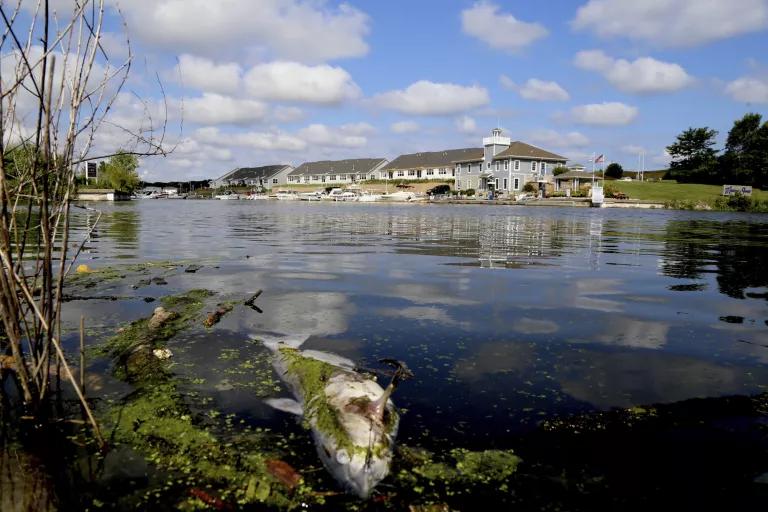
A dead fish floats near the Portage Marina after cyanide spilled into Lake Michigan, forcing park officials to close the nearby beaches for several days.
John Luke/The Times via Associated Press
“While we’re in some ways more accessible, at times industry or other urban effects do cause other problems for this park,” says Rowe.
State officials are currently investigating the cyanide spills and their resulting damage, but nearby companies have released harmful chemicals here before. The Park Service also had to close the park’s beaches in November 2017, when U.S. Steel (located next to ArcelorMittal) dumped hexavalent chromium—a toxin made famous by the film Erin Brockovich—into Lake Michigan via the Port of Indiana–Burns Harbor.
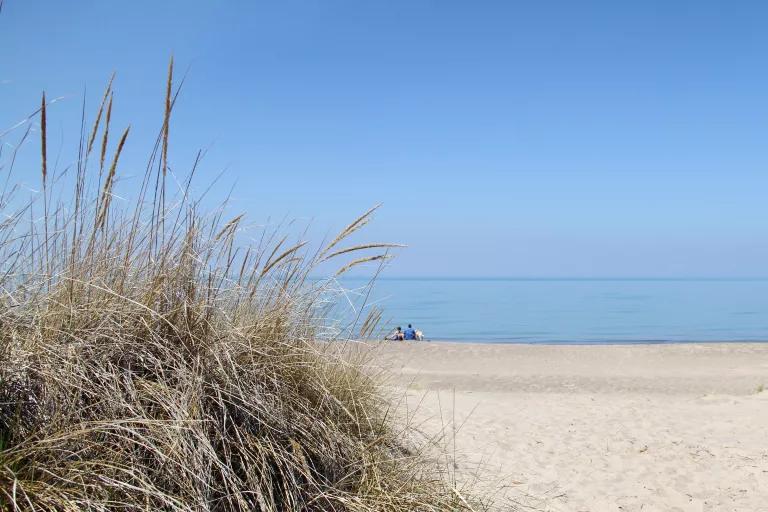
Visitors to the Dunbar Beach section of the park seen through marram grass, one of the more than 1,100 native plants that thrive in the area
Indiana Dunes National Park
While dune advocates continue to make a case for protection or restoration, NIPSCO and communities surrounding the plants will ultimately decide what to do with the land. The conservation contingent may swell along with the number of park guests as visitors see prickly pear cacti, hickory forests, and threatened pitcher’s thistle for themselves. After all, the place can have a powerful effect on people, whether just dropping by for a dip or living in an old fisherman’s shack. Feeling the shifting sand under your feet and the lake breeze in your hair, you may never want to leave. Just ask Diana of the Dunes.
This NRDC.org story is available for online republication by news media outlets or nonprofits under these conditions: The writer(s) must be credited with a byline; you must note prominently that the story was originally published by NRDC.org and link to the original; the story cannot be edited (beyond simple things such as grammar); you can’t resell the story in any form or grant republishing rights to other outlets; you can’t republish our material wholesale or automatically—you need to select stories individually; you can’t republish the photos or graphics on our site without specific permission; you should drop us a note to let us know when you’ve used one of our stories.

The Long, Long Battle for the Arctic National Wildlife Refuge
The Uinta Basin Railway Would Be a Bigger Carbon Bomb Than Willow
Why the Willow Project Is a Bad Idea